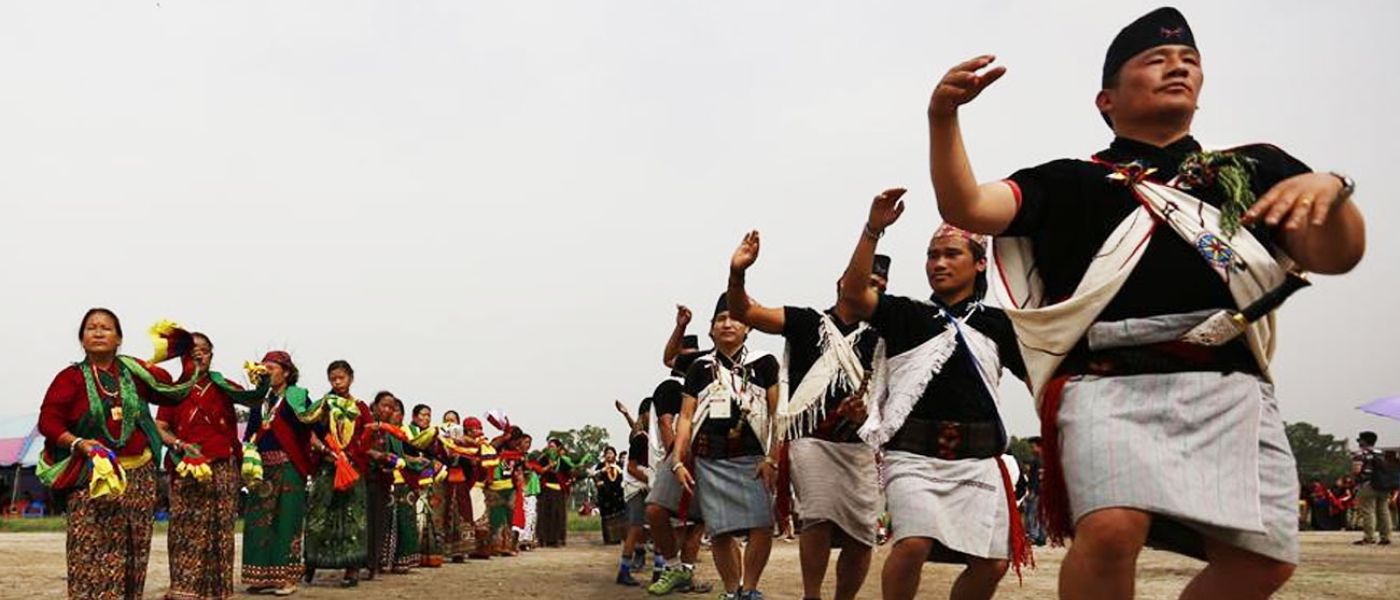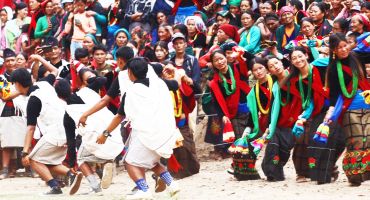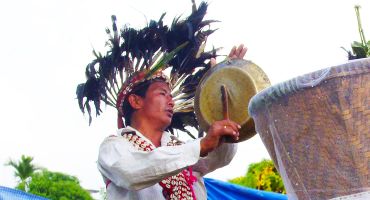The fact that Magars are essentially nature worshippers can be derived from their social customs and rituals. Over the many centuries many Magars are known to have accepted both Hindu and Buddhist philosophies but Magars are quintessentially Nature worshippers. Magars worship Semya, Bhumya, Sirung, Sedeni and Banajhakri.
Many rituals that relate to nature worship, such as offering raw eggs or chickens, worshipping stone idols, hoisting religious banners, offering milk, rice grains and turmeric, making offerings on hill tops, using Shamans to ward off evil spirits, offering prayers for safe keeping from lightning and thunder, praying for the rain, can be found in Magar rituals. For the Magars, a year consists of only two seasons. The ascending season (Ubhauli) March to June and the descending season August-February (Udhauli).
According to Magar myth and folklore, there were two brothers. Syopa and Gorpa. Syopa was the manifestation of nature and Gorpa was a human. When it came to dividing their inheritance, Gorpa asked Syopa to leave the farmlands, houses and civilization and go to live in the forests. And so man distanced himself from nature but they couldn’t stay apart for long and each still became dependent on each other.
In the ancient times, the Magars would eat Yam. When the age of agriculture dawned, the Magars realized that all cultivated crops needed to be saved from landslides, floods and droughts. They started offering new crops to nature and celebrated the day in prayer and rejoicing with merriment and dancing. To make nature happy, they would also offer animals in the form of sacrifice to nature. This led the way to the ritual of Bhumye or Earth worship. In many regions, the Magars started this custom during the sowing season and at others, they did so during the harvesting season. But today the first day of the month of Shrawan is the universally accepted date for this ritual.
The last King of the Atharah (18) Magarat region, Darya Jaitam had seen a devastating flood in the monsoon when his entire fortress had been swept away and he issued a decree to start a ritualistic festival in lieu of a Lunar Calendar where young men and women (Dhapa – Dhami) would sing, dance and pray for rid the world from disasters, famine and disease. The ritualistic festival of Bhumya has many names in different Magar inhabited regions. Some call it Bhumya while some called it Bal Puja or Nokowang/Rangkya Tihar. It may also be called Chokhe parva or Dhodla-Dhodli puja. The purpose of this worship ritual is to pray for abundance and for the elimination of negative energies around one’s birthplace and where one might survive, stay, flourish and thrive.
A month before the actual date of the worship ritual, the festival commences and one can hear people cleaning up their music instruments, practicing and playing it and young men and women gathering in groups to prepare for traditional dances. A makeshift shrine is made for the ritual where are stone idol is placed. The shrine is made using rice straw and a wicker basket which olds ritualistic items are placed near the shrine. All the village farmers bring in the new crops along with offerings of money to be put across the shrine as a mark of respect and gratitude for a good harvest and abundance. The sacrificial animal is taken around the village and shown to all the residents. Its body is marked with ashes and purified with rice grains as it is circled around every house in the village. After the formal ritual worship ends, all the people get together for “Syai” which is ritualistic, festival dance of the Magar people.





Leave a Reply